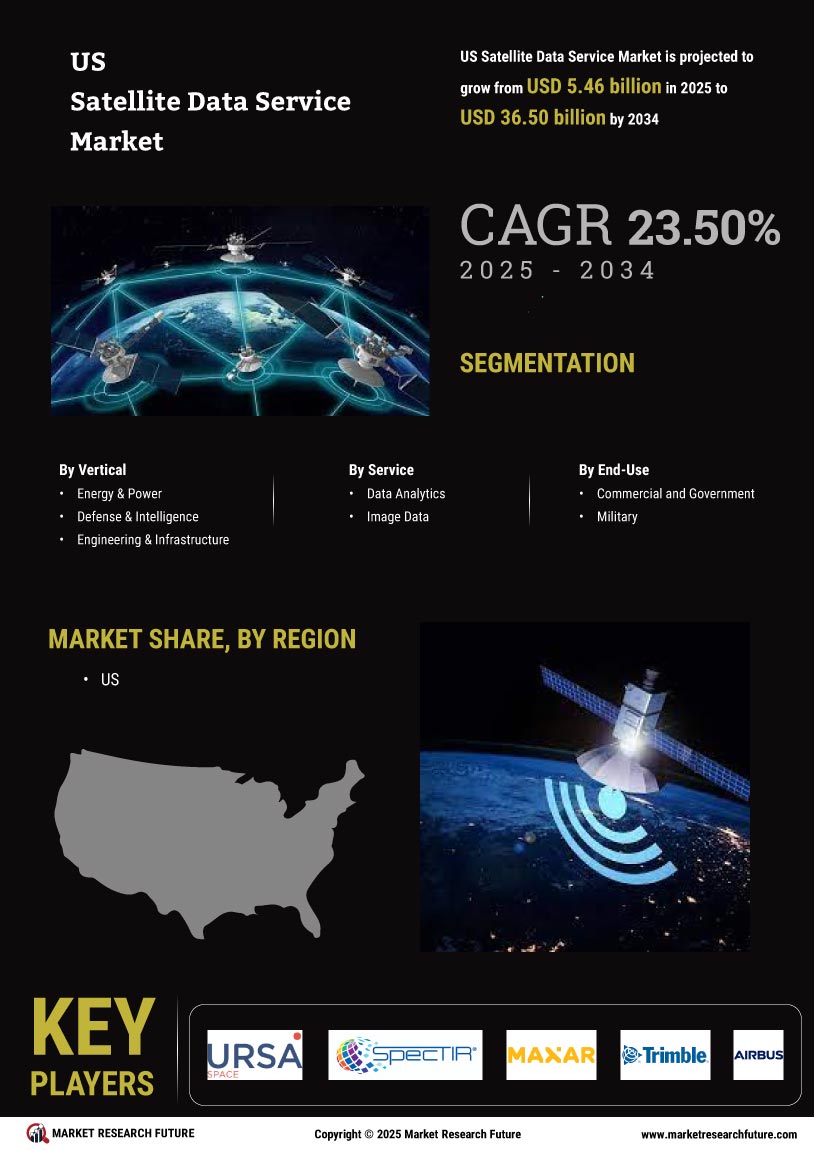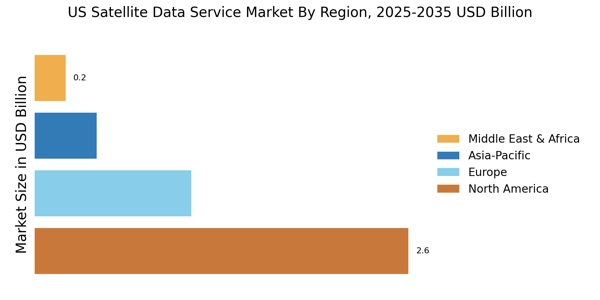Growing Demand for Geospatial Data
The US Satellite Data Service Market is experiencing a notable increase in demand for geospatial data across various sectors. Industries such as agriculture, urban planning, and disaster management are increasingly relying on satellite data for decision-making and operational efficiency. According to recent estimates, the market for geospatial data is projected to reach approximately 100 billion USD by 2026, indicating a robust growth trajectory. This demand is driven by the need for accurate and timely information to support strategic initiatives, such as precision agriculture and smart city development. As organizations recognize the value of satellite data in enhancing their operational capabilities, the US Satellite Data Service Market is likely to expand further, fostering innovation and investment in satellite technologies.
Advancements in Satellite Technology
Technological innovations in satellite systems are significantly influencing the US Satellite Data Service Market. The development of small satellites, or CubeSats, has made satellite data more accessible and cost-effective. These advancements enable the deployment of a larger number of satellites, enhancing data collection capabilities and resolution. Furthermore, improvements in sensor technology allow for more precise measurements and real-time data transmission. As a result, industries are increasingly adopting satellite data for applications such as climate monitoring and resource management. The market is expected to grow as these technological advancements continue to lower costs and improve the quality of satellite data services, thereby attracting new users and applications.
Regulatory Support and Policy Frameworks
The US Satellite Data Service Market benefits from supportive regulatory frameworks and policies that promote the use of satellite data. Government initiatives aimed at enhancing national security, environmental monitoring, and disaster response are driving investments in satellite technologies. For instance, the National Oceanic and Atmospheric Administration (NOAA) and the Federal Aviation Administration (FAA) have established guidelines that facilitate the integration of satellite data into various applications. This regulatory support not only encourages innovation but also fosters collaboration between public and private sectors. As policies evolve to embrace satellite data utilization, the market is likely to witness increased participation from diverse stakeholders, further propelling growth in the US Satellite Data Service Market.
Increased Investment in Space Infrastructure
Investment in space infrastructure is a key driver of growth in the US Satellite Data Service Market. Both government and private entities are allocating substantial resources to enhance satellite capabilities and expand data services. Initiatives such as NASA's Artemis program and various commercial space ventures are indicative of this trend. The total investment in satellite infrastructure is expected to exceed 30 billion USD by 2025, reflecting a commitment to advancing satellite technologies. This influx of capital is likely to stimulate innovation, improve service offerings, and expand the range of applications for satellite data. As investment continues to rise, the US Satellite Data Service Market is poised for substantial growth, attracting new players and fostering competition.
Rising Interest in Climate Change Monitoring
The urgency of addressing climate change is propelling the US Satellite Data Service Market forward. Satellite data plays a crucial role in monitoring environmental changes, tracking greenhouse gas emissions, and assessing the impact of climate-related events. Organizations and governments are increasingly utilizing satellite imagery to inform climate policies and strategies. The market for climate monitoring services is projected to grow significantly, with estimates suggesting a potential increase of over 20 billion USD by 2027. This rising interest in climate change monitoring not only highlights the importance of satellite data but also underscores the potential for the US Satellite Data Service Market to contribute to global sustainability efforts.


















Leave a Comment